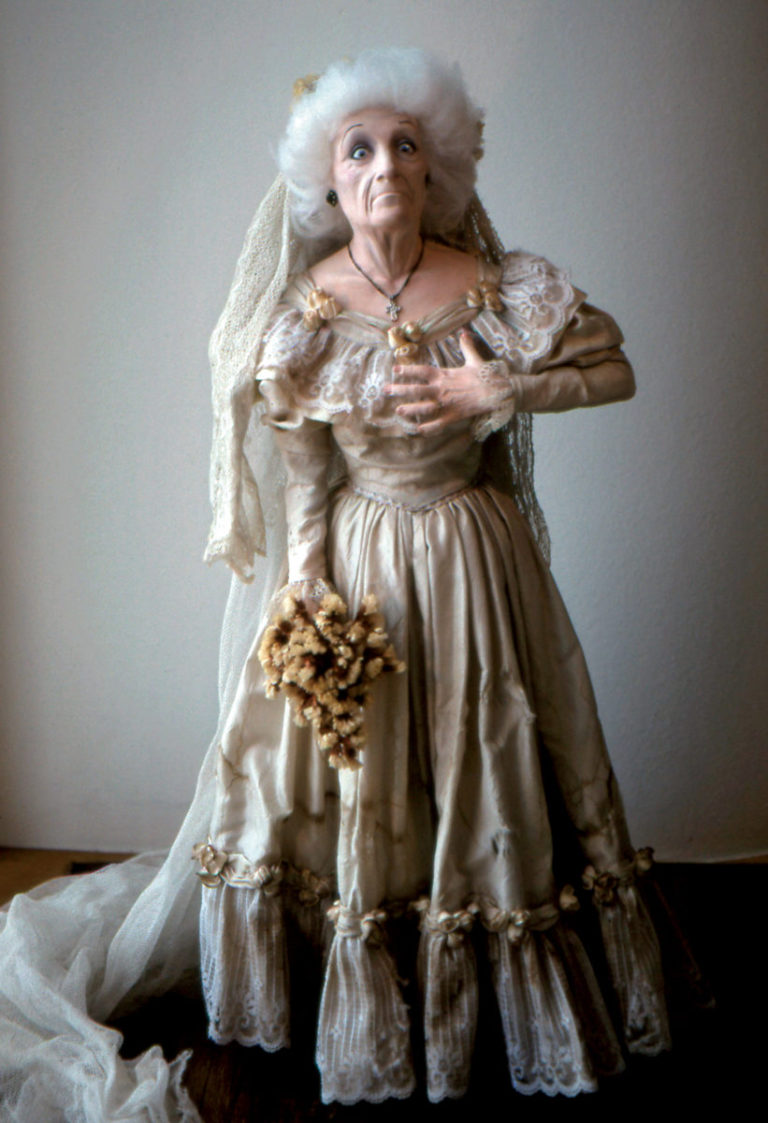June’s daughter, Robin, announced the passing to fellow NIADA member, Annie Wahl, who alerted the membership at large. Although June’s distinctive artistry resides in major galleries and in private collections throughout the world, her legacy is about friendship, collaboration, and a truly genuine spirit.
When we were researching the artists’ bios for the NIADA book project, June sent us this lovely letter telling her story in her own words. Thought I’d share it in her memory.
~ Shelley Thornton
Dear Shelley:
Writing this ‘bio’ is harder to do than I thought it would be.
You may have to edit a lot out of it. I am going to try to make it simple and not too frilly.
Born, 1938 in an old pickup truck, on the side of the road near Karnes City, Texas. No doctor in attendance, no money to pay for one. I eventually got a real birth certificate, but they listed me as ‘male’, and I could have been drafted back during the Viet Nam war if my name and age had ever come up. I was a ‘boy’ until my uncle went with me to the Austin State Capitol to ‘verify’ that I was indeed a ‘girl’. I suspect the old doc was drunk when he made out the certificate.
My young mother and dad were on their way down to south Texas to work in the onion harvest, but my dear little Mom just couldn’t wait until we got to our destination. Yes, back then, without a decent education, work was hard to find, but bless their hearts, my parents both were hard workers, and we never went Hungary. I was their first born, of 5 daughters and 1 son. I was 19 when the boy was born. My poor mother worked in the fields up until the day he was born. I was determined to try to get a better education than my parents, (3rd grade for them… and 12 grades for me.)
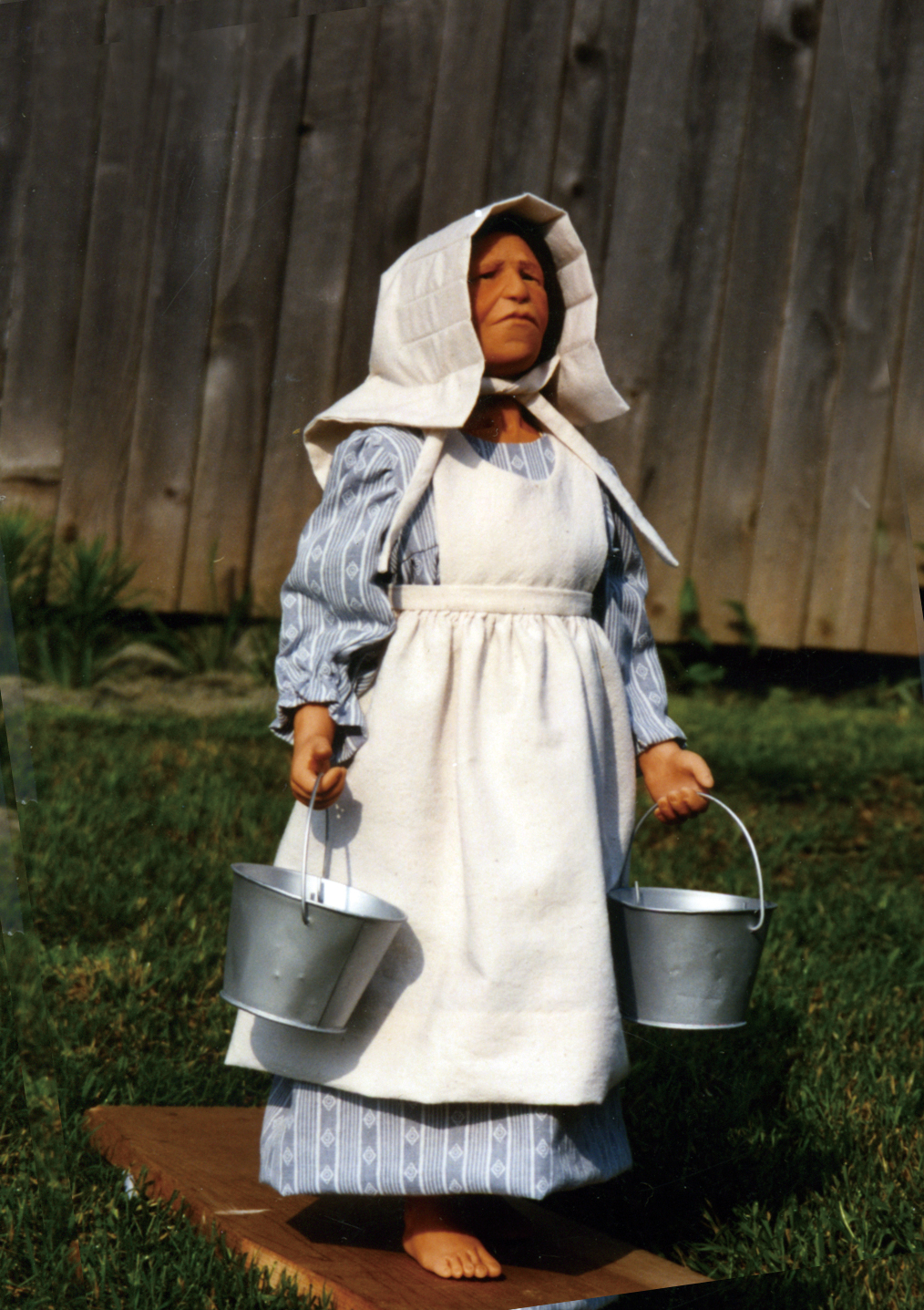 My mother was really an ‘Earth Mother’ if there was ever such a thing. She could take anything and make a meal of it. If we had no meat for the stew pot, she would take dad’s 22 rifle, and go out into the woods, and shoot either a rabbit, or squirrel, or quail, or whatever came across her line of fire. She picked wild poke salat, (something like spinach). for some green food. She always had a big garden, and was forever canning food to last the winter months. We lived near the Washita River, which was FULL of carp and catfish. And she LOVED to go fishing. We had a little brown Swiss cow, that gave lots of milk, which was loaded with heavy cream. She got spending money by making butter, and selling it to the ‘townies’. Same deal with chicken and eggs. It was a rare treat to have roast chicken for a Sunday meal. It was always the old hens that had stopped laying eggs. Tough, but filling, especially with dumplings.
My mother was really an ‘Earth Mother’ if there was ever such a thing. She could take anything and make a meal of it. If we had no meat for the stew pot, she would take dad’s 22 rifle, and go out into the woods, and shoot either a rabbit, or squirrel, or quail, or whatever came across her line of fire. She picked wild poke salat, (something like spinach). for some green food. She always had a big garden, and was forever canning food to last the winter months. We lived near the Washita River, which was FULL of carp and catfish. And she LOVED to go fishing. We had a little brown Swiss cow, that gave lots of milk, which was loaded with heavy cream. She got spending money by making butter, and selling it to the ‘townies’. Same deal with chicken and eggs. It was a rare treat to have roast chicken for a Sunday meal. It was always the old hens that had stopped laying eggs. Tough, but filling, especially with dumplings.
Eventually, we moved to Central California, hoping to find work. I got a job at the Swanson TV dinner factory, and my ‘job’ was to stand near the conveyer belt, and cut the back ends out of the turkey carcasses. What a tedious job. Then, wonder of wonders, I got a job as a long distance telephone operator. I took the night shift, which was not very busy, and I could eavesdrop on the strangest conversations. This was before the ‘coming out’ of gays, so you can bet I got an earful. But, being a naive farmers daughter, I didn’t have a clue what they were talking about.
I met my husband in California. Bob Goodnow was a died in the wool, South Dakota farm boy. He hated California. He was used to neighborly, friendly and trustful people. His opinion of California was that it was filled with fruits and nuts. (smile) Eventually, his grandfather died, leaving a bit of money to Bob’s mother, and she used the money to buy a farm (in SD), …. for Bob to farm for her. It didn’t take long before we realized that one quarter mile farm would not support 2 families. So we bought her out, making payments to her until we got it paid off. Meanwhile, I learned to ‘sculpt’.
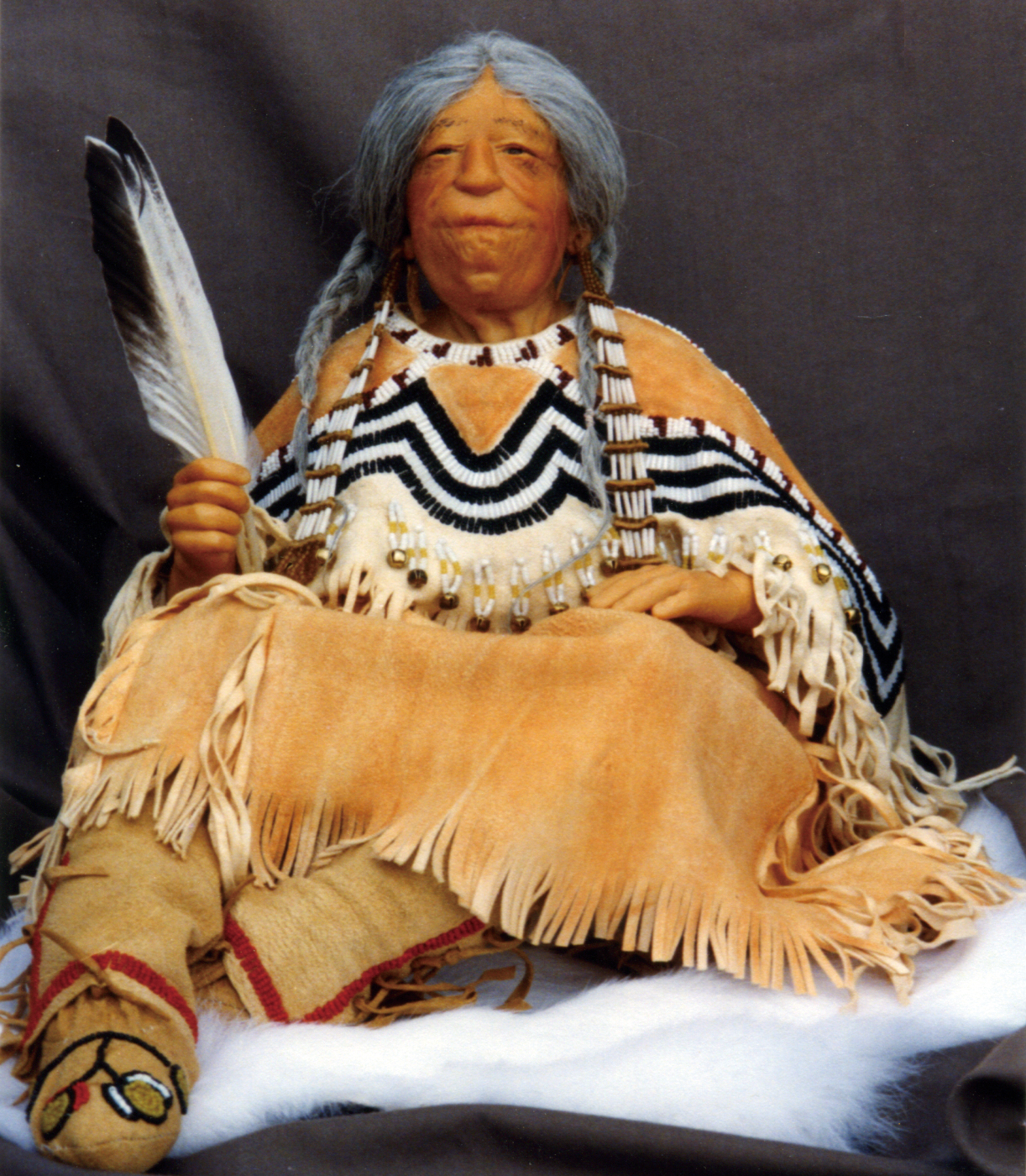 One Sunday afternoon, Bob’s elderly uncle Whit was sitting across the table from me and I had a block of my daughters ‘play dough’ clay. With only my fingers and the back of a fingernail clippers tool, I sculpted uncle Whit’s likeness in clay. It really DID look like him. I was startled, amazed when I saw what I had done. But, now what to do with it. I didn’t want to squish it up. I wanted to save it. But how? I went to the library, searching for books on mold making. No luck. I asked the librarian if she could help me find out how to make a mold. She put in a plea to the state of South Dakota Library system, for any books about moldmaking. Little by little, I learned. The hard way. Trial and error. Mostly error.
One Sunday afternoon, Bob’s elderly uncle Whit was sitting across the table from me and I had a block of my daughters ‘play dough’ clay. With only my fingers and the back of a fingernail clippers tool, I sculpted uncle Whit’s likeness in clay. It really DID look like him. I was startled, amazed when I saw what I had done. But, now what to do with it. I didn’t want to squish it up. I wanted to save it. But how? I went to the library, searching for books on mold making. No luck. I asked the librarian if she could help me find out how to make a mold. She put in a plea to the state of South Dakota Library system, for any books about moldmaking. Little by little, I learned. The hard way. Trial and error. Mostly error.
In South Dakota, there is a large Native American Indian population, and for some reason, their facial expressions intrigued me. I ordered more books, with the topic about Indians. We are talking years here people. I had a baby girl to tend, and farm animals to tend. Meals to make for seasonal harvesters, hay to help put into the barn, and 101 other things that go with running a farm. Not a lot of time to practice sculpting or mold making.
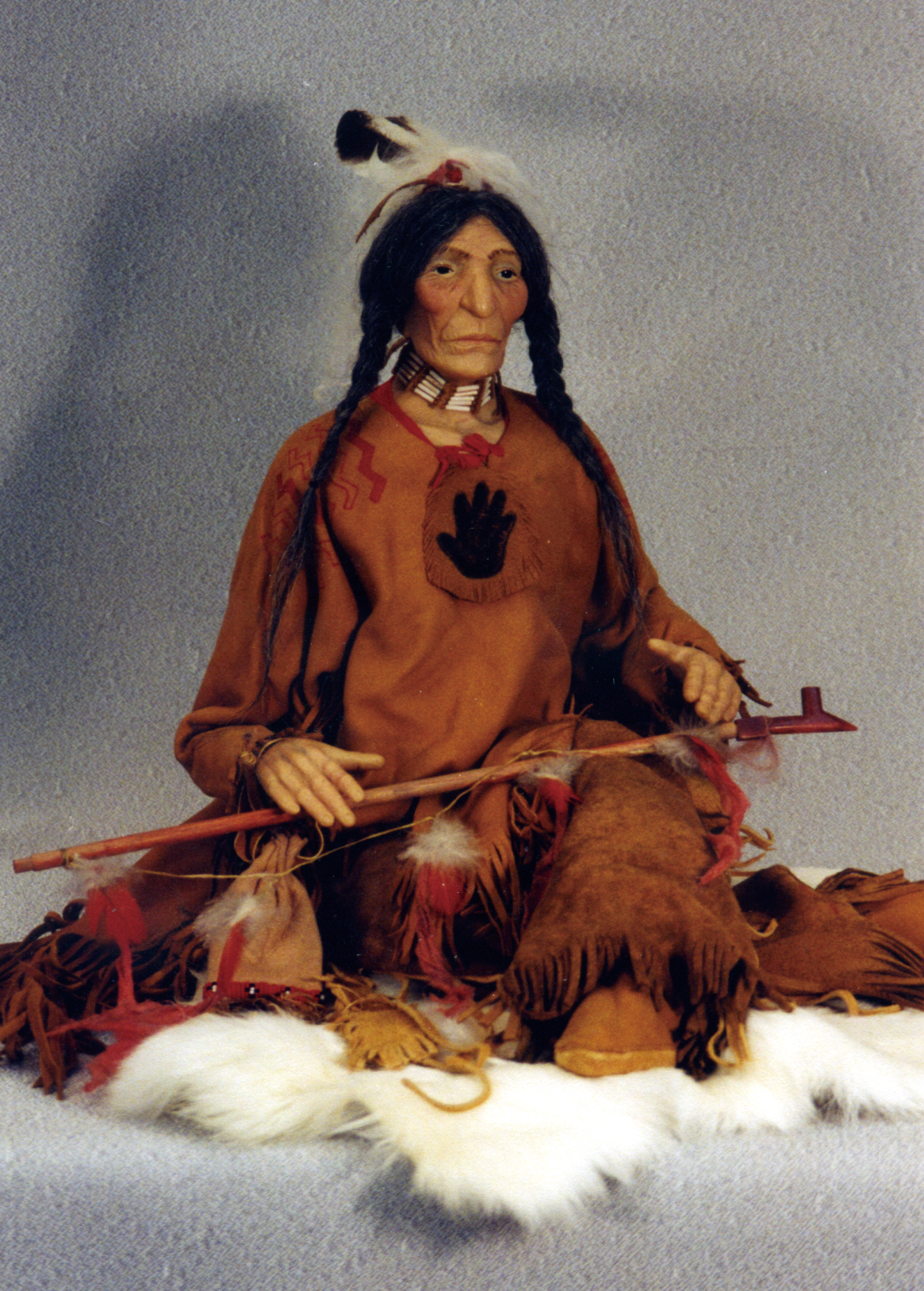 One day, I heard about a doll museum in Sioux Falls. I sincerely wanted to go there to take some pictures of old costumes. And, wonder of wonders, there I met a doll collector. I about fell over, learning there were people who actually PAID for hand made dolls. In fact, the museum person invited me to attend a UFDC Regional, which was being held in Lincoln, Nebraska. She said it would not cost me much, as she intended to go anyway, and I could room with her. (Remember, dry land farmers are usually penniless), and worse, my husband considered my doll making as ‘foolishness’. But, I persevered, and attended as many UFDC shows as possible. I would take my poor little daughter with me… make a bed under the sales table so I could watch her and tend my booth together. I tried to keep her entertained with crayons, and toys. She was a good little trooper.
One day, I heard about a doll museum in Sioux Falls. I sincerely wanted to go there to take some pictures of old costumes. And, wonder of wonders, there I met a doll collector. I about fell over, learning there were people who actually PAID for hand made dolls. In fact, the museum person invited me to attend a UFDC Regional, which was being held in Lincoln, Nebraska. She said it would not cost me much, as she intended to go anyway, and I could room with her. (Remember, dry land farmers are usually penniless), and worse, my husband considered my doll making as ‘foolishness’. But, I persevered, and attended as many UFDC shows as possible. I would take my poor little daughter with me… make a bed under the sales table so I could watch her and tend my booth together. I tried to keep her entertained with crayons, and toys. She was a good little trooper.
At one of the shows, (it may have been Omaha,) I entered a few of my pieces in some of the competition categories. I wanted my work to be seen by any and all UFDC members attending. Eventually, I met my mentor, Hilda Geuther, who had a little doll museum in Eureka Springs, Arkansas. She collected ‘Indian dolls’, so every Indian doll I would make, she would buy it from me. She became my critique, and counselor. She was very kind to me. She and her husband Milt were both rooting for me. They are both ‘at rest’, and their June Goodnow collection is now owned by their daughter. The only other person who has more of my dolls than Geuthers’ daughter, is MY daughter, Robin Strand.
I began making dolls in 1972, and was voted into NIADA in 1976. It was an honor then and is STILL an honor to be a member of such a group of fine artists. In 2002, I was on the verge of semi retirement, when I found a ‘lump’ in my left breast. Yes, it was malignant and had to be removed, and I had to have radiation. I put my OKCY home up for sale and bought a tiny recreation vehicle to run around in. I wanted to see some of this beautiful country before the cancer came back. And come back it did in 2003. This time, on my spine. More surgery and more radiation. In 2004, it came back again r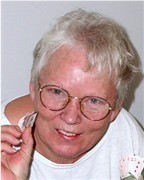 ight under my belly button. No radiation this time though. I sold my little RV, and moved into a 2 bedroom apartment in a retirement community. This community is very near a nursing home with individual assisted living apartments, with nursing facilities. There is also a church close by, and a cemetery only 1/2 mile from the church. I have my will made out, and am still making my amends and if I have hurt you in any way, I apologize NOW.
ight under my belly button. No radiation this time though. I sold my little RV, and moved into a 2 bedroom apartment in a retirement community. This community is very near a nursing home with individual assisted living apartments, with nursing facilities. There is also a church close by, and a cemetery only 1/2 mile from the church. I have my will made out, and am still making my amends and if I have hurt you in any way, I apologize NOW.
After the first bout of cancer, radiation and follow up treatment, I gave up making dolls, and traveling to teach sculpting seminars. I am pretty much a ‘stay at home’ person these days, baking bread and cinnamon rolls and cookies for those in worse shape (health-wise) than I am. I enjoy remembering each person’s birthday, and the old men usually get a box of microwave popcorn, and the old women get a sack of peanut butter cookies. It is amazing how a card and box of goodies can bring the biggest smile to a wrinkled old face. I have a little garden, and raise okra and black-eyed peas and tomatoes. People donate quilt scraps to me and I make lap robes for the patients living at the nursing home. Just the right size to cover little skinny legs to keep them warm in the winter time.
My wish is that NIADA continues their high standards for membership and that we ‘grow’ and prosper and have fun doing it. And most of all, let’s be kind to one another.
Sincerely,
June Goodnow
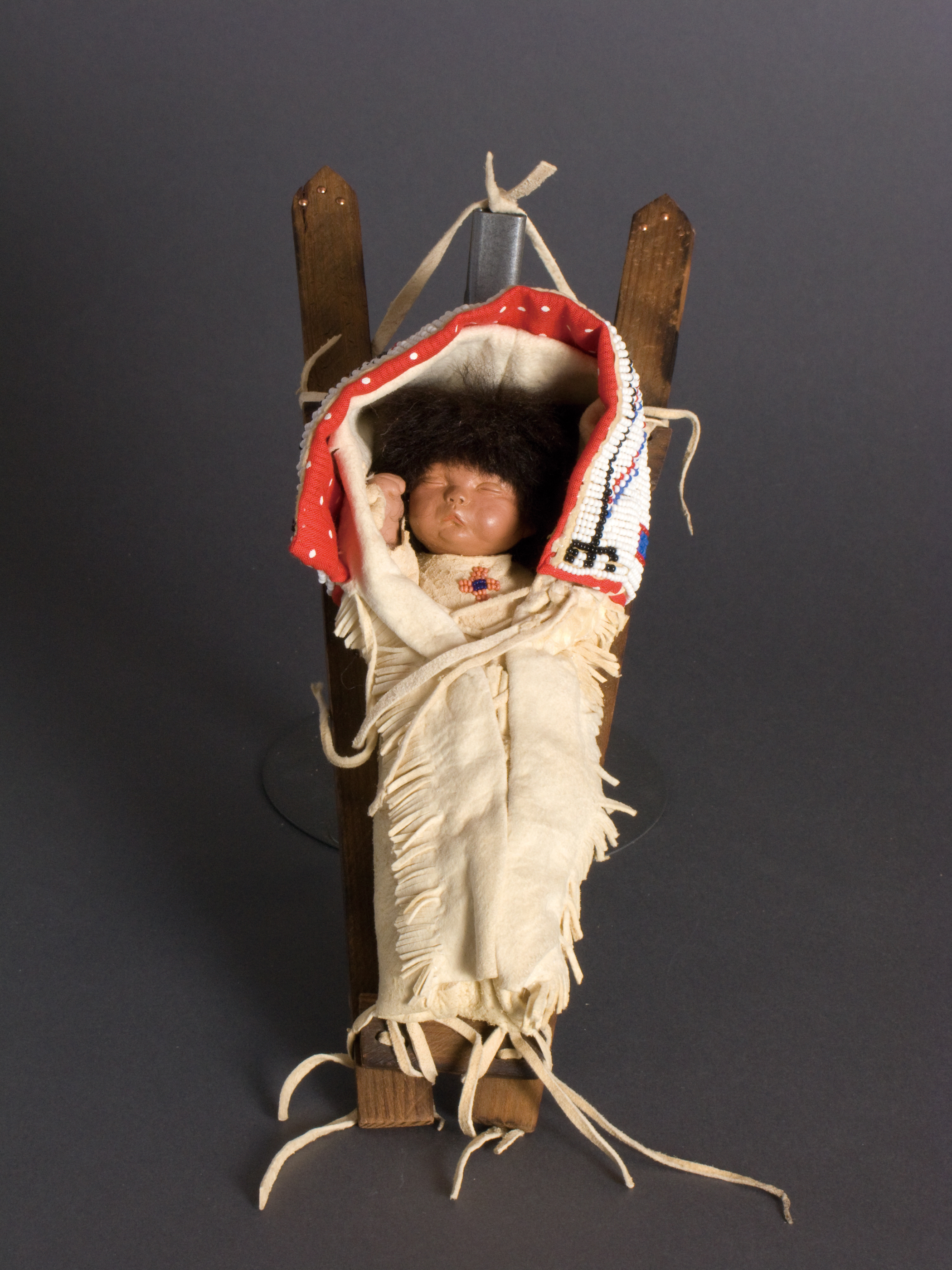


 Cyberspace was a boon to June’s ability to reach far and wide to her target audience. She loved having one of the first doll artist web sites, and having e-mail. She traveled all over the world to teach doll sculpting, silicone mold making and resin casting via contacts she made on the internet. In 1995, June was invited to teach in Australia and New Zealand. She set up the entire series of classes — four in Australia and one in New Zealand — via e-mail. June was a most beloved Doll Artist who enjoyed sharing her knowledge and skill with others so generously. It was an honor to call her one of my best friends. I will truly miss her.
Cyberspace was a boon to June’s ability to reach far and wide to her target audience. She loved having one of the first doll artist web sites, and having e-mail. She traveled all over the world to teach doll sculpting, silicone mold making and resin casting via contacts she made on the internet. In 1995, June was invited to teach in Australia and New Zealand. She set up the entire series of classes — four in Australia and one in New Zealand — via e-mail. June was a most beloved Doll Artist who enjoyed sharing her knowledge and skill with others so generously. It was an honor to call her one of my best friends. I will truly miss her. This wonderful visit led to a warm friendship and eventually to her sponsoring my membership as a Patron in NIADA. For years she would drop a note now and then sharing news of her daughter Robin who she cherished, her art, and of life in South Dakota. As time went by June took on life’s challenges with a sense of adventure and possibility. After a period living overseas, she eventually found her way home … to the red Oklahoma soil. Even though our letters were fewer and farther between as years went by, we stayed in touch. Each letter … and yes, email … was full of the same love and joy. Today my family has these letters, her dolls and fond memories of this kind and good woman.
This wonderful visit led to a warm friendship and eventually to her sponsoring my membership as a Patron in NIADA. For years she would drop a note now and then sharing news of her daughter Robin who she cherished, her art, and of life in South Dakota. As time went by June took on life’s challenges with a sense of adventure and possibility. After a period living overseas, she eventually found her way home … to the red Oklahoma soil. Even though our letters were fewer and farther between as years went by, we stayed in touch. Each letter … and yes, email … was full of the same love and joy. Today my family has these letters, her dolls and fond memories of this kind and good woman.


